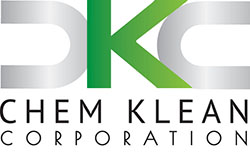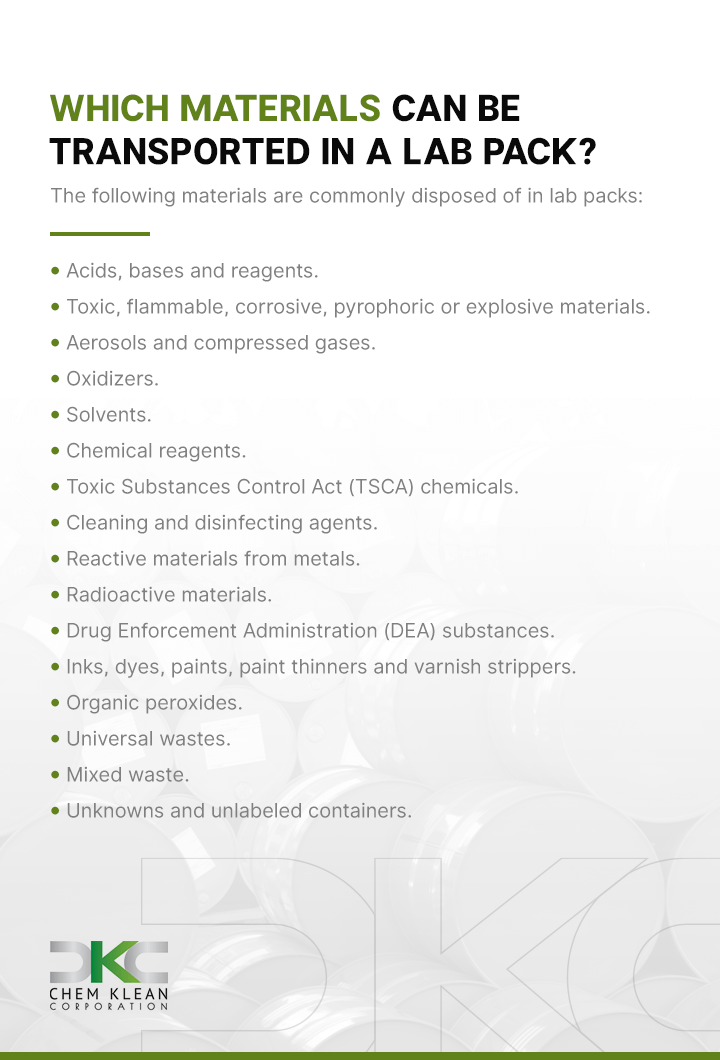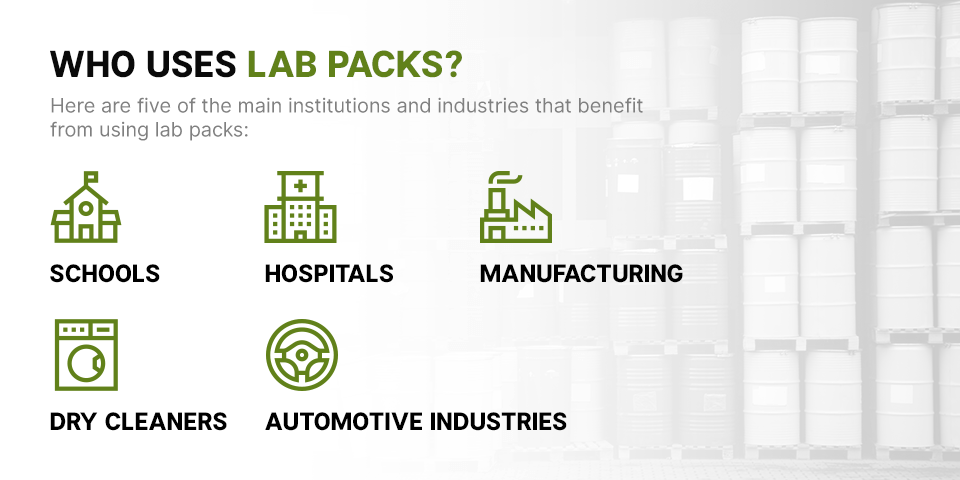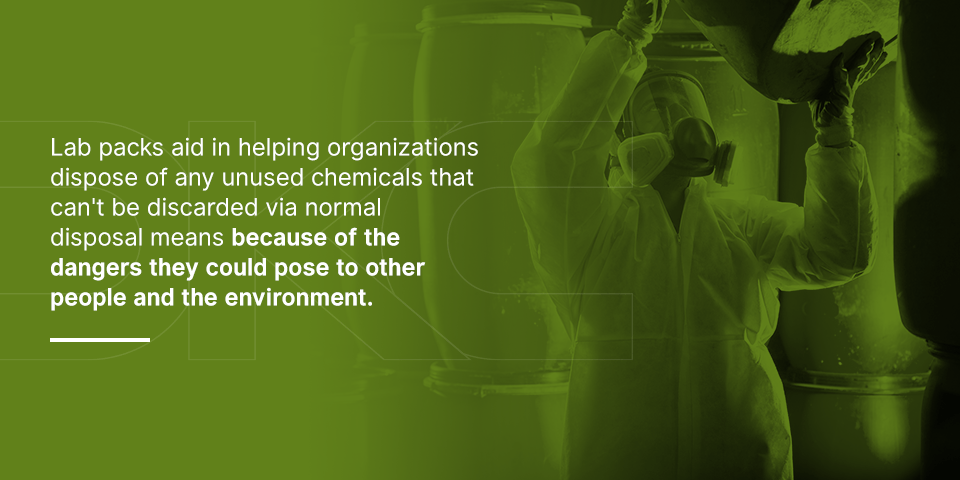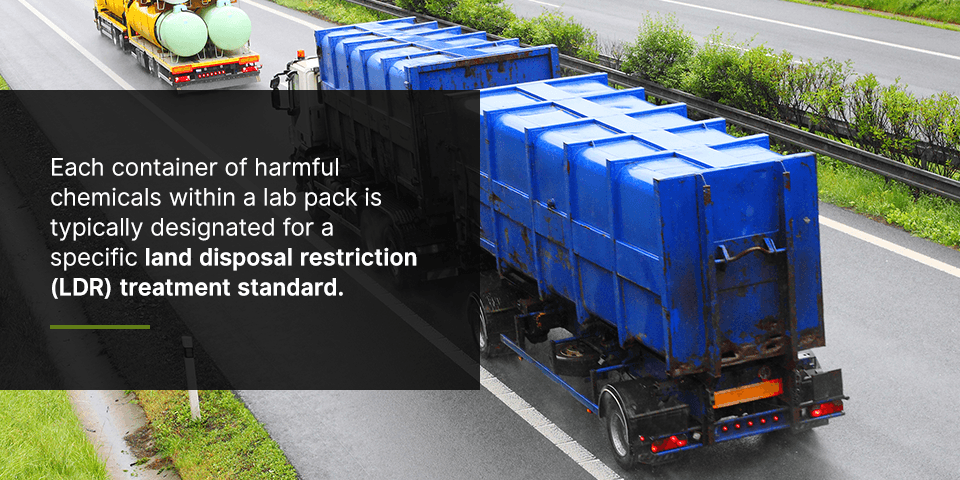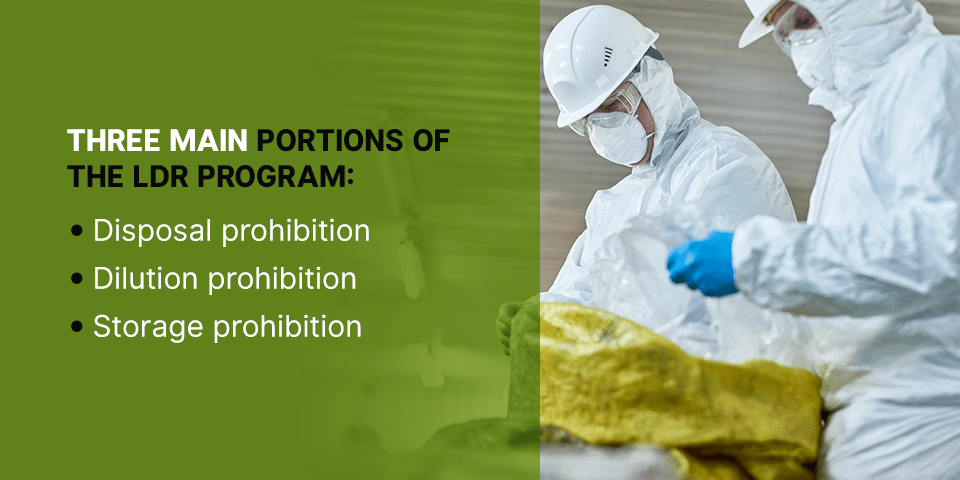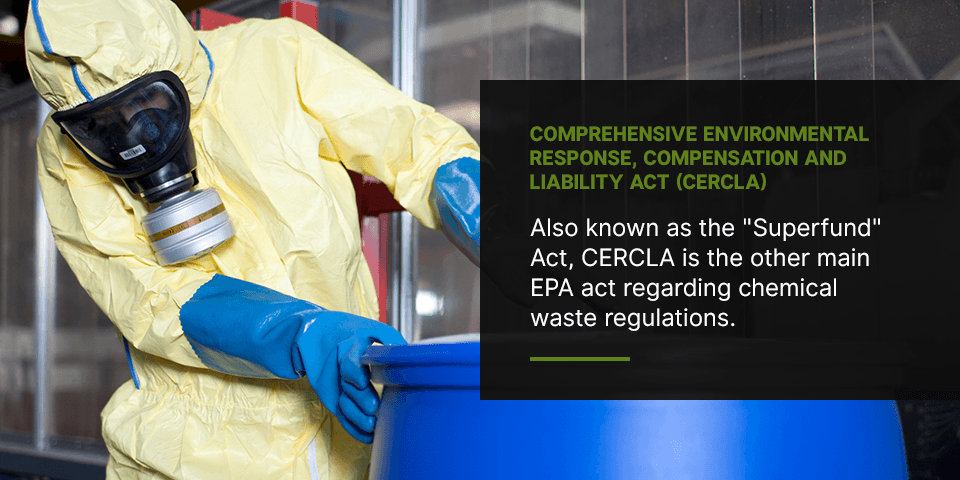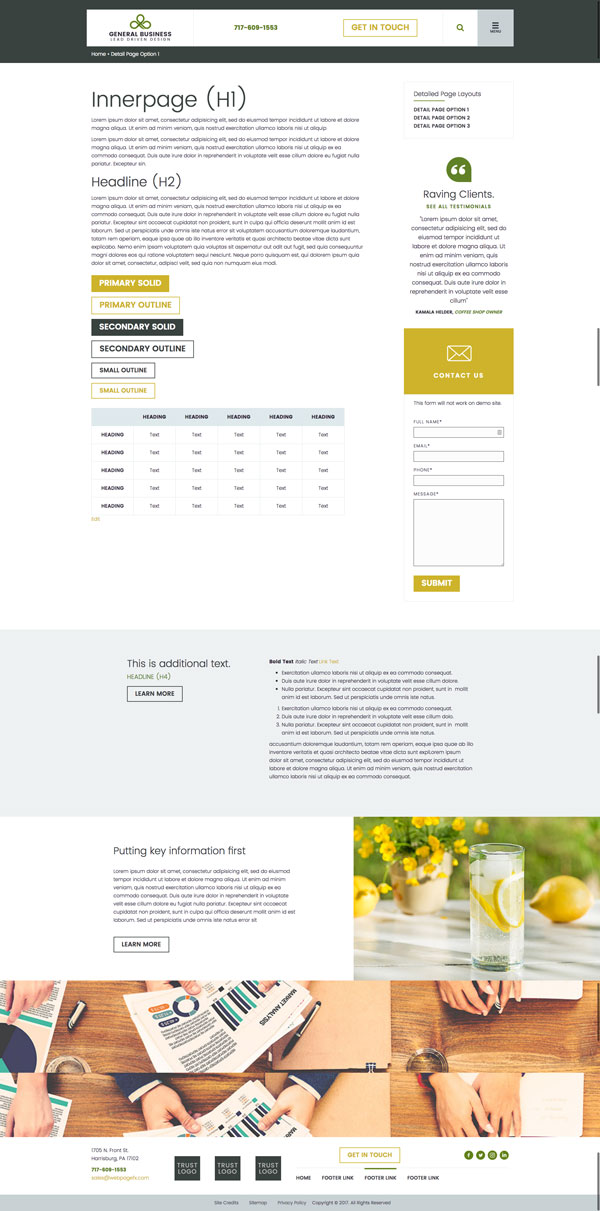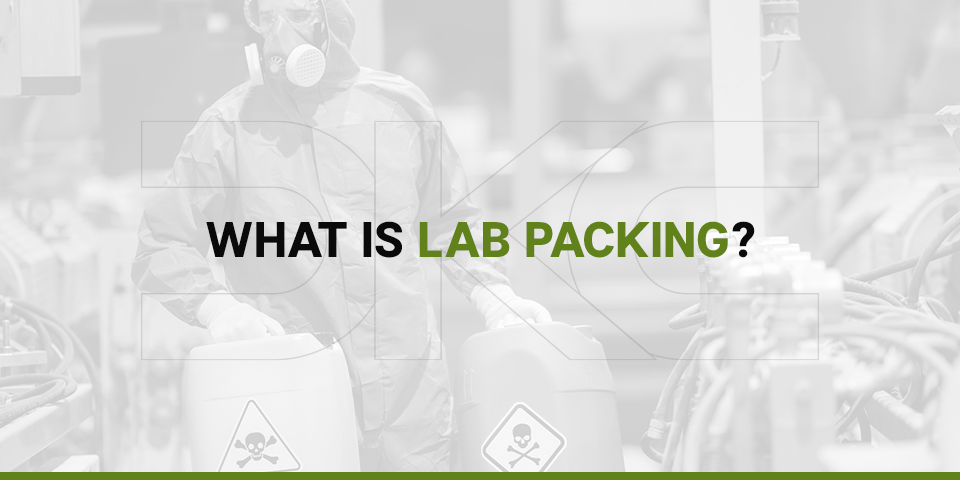
Any laboratory, warehouse, medical center or educational institution most likely produces an abundance of hazardous waste they must dispose of each year. Correctly discarding hazardous materials can be a challenging, costly and time-consuming process, but proper hazardous waste disposal is imperative for public health and safety. Fortunately, lab packing serves as an efficient and cost-effective way for organizations to decommission their hazardous waste safely.
This article will go over the definition of a lab pack, which materials can be transported within a lab pack, which industries use lab packs, which benefits using lab packs can offer and where these containers end up after being sent off-site. Finally, we'll also discuss the various governmental regulations surrounding lab packs and the disposal of hazardous waste. If you work in an industry that generates hazardous waste, keep reading to find out how to quickly, efficiently and safely dispose of it with lab packs.
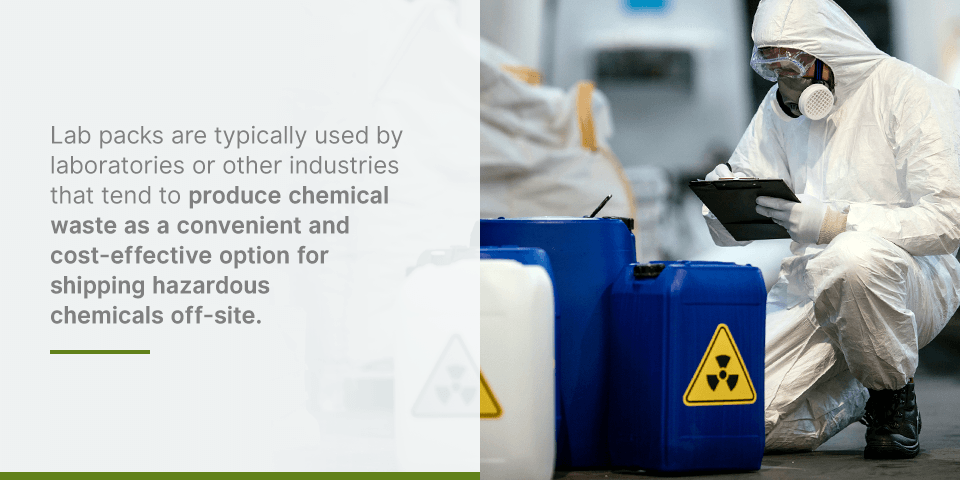
What Are Lab Packs?
In general, a lab pack is a large, sturdy container used to ship smaller containers of waste. When lab packing chemicals, several smaller intact containers get placed into a large drum that can typically hold up to about 55 gallons of waste. The smaller containers within the lab pack are carefully sorted and padded with an inert material that allows for the safe transport and disposal of the waste chemicals.
Lab packs are typically used by laboratories or other industries that tend to produce chemical waste as a convenient and cost-effective option for shipping hazardous chemicals off-site. The large lab pack container gets filled with various smaller-quantity containers of materials or chemicals that are similar to each other, such as acids, flammables and oxidizers. The container is then marked with its assigned shipping name for easy sorting.
After receiving a lab pack, a hazardous waste management company will further consolidate the chemicals and substances and prepare them for the best possible course of disposal. Depending on the circumstances, the lab pack wastes could be incinerated, recycled, put in a landfill, specially treated, neutralized or stabilized. They could also undergo fuels blending. In this way, lab packs also allow hazardous waste management companies to dispose of like materials more efficiently.
When done properly, lab packing can give hazardous waste generators peace of mind that their expired chemicals and hazardous materials have been marked, packed and disposed of with care. Removing unused or expired chemicals from the inventory can also protect employees from potential hazards and clean out unwanted materials.
Which Materials Can Be Transported in a Lab Pack?
Lab packing is a great way to transport and dispose of large quantities of different hazardous waste materials while still remaining within federal regulations. The following materials are commonly disposed of in lab packs:
- Acids, bases and reagents.
- Toxic, flammable, corrosive, pyrophoric or explosive materials.
- Aerosols and compressed gases.
- Oxidizers.
- Solvents.
- Chemical reagents.
- Toxic Substances Control Act (TSCA) chemicals.
- Cleaning and disinfecting agents.
- Reactive materials from metals.
- Radioactive materials.
- Medical waste.
- Drug Enforcement Administration (DEA) substances.
- Inks, dyes, paints, paint thinners and varnish strippers.
- Organic peroxides.
- Universal wastes.
- Mixed waste.
- Unknowns and unlabeled containers.
Because federal guidelines include different hazard classes, packing groups and specific shipping names for hazardous waste, packing certain chemicals together can be highly dangerous. Only trained individuals should oversee lab packing materials. For example, picric acid is one chemical that becomes explosive with age and must be handled with extreme caution and expertise.
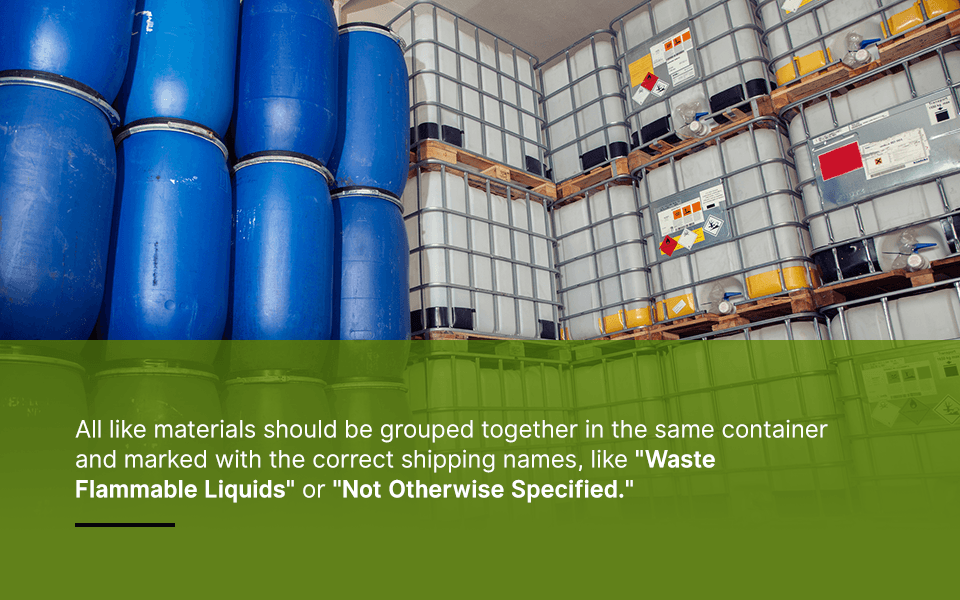
While preparing to lab pack chemicals, it is important to remember to comply with all U.S. Department of Transportation (DOT) hazmat shipping regulations and the U.S. Environmental Protection Agency (EPA) lab pack treatment standards. All like materials should be grouped together in the same container and marked with the correct shipping names, like "Waste Flammable Liquids" or "Not Otherwise Specified." Lab packing does allow for certain exceptions to hazardous waste transportation rules, which provides relief from using technical names for combination packages or acquiring a hazmat certification.
Thanks to these exceptions, lab packing makes safely shipping excess, expired or delicate chemicals a bit simpler for organizations that generate hazardous waste.
Who Uses Lab Packs?
Numerous industries use unstable chemicals, chemicals that become hazardous after use — such as solvents or cleaning solutions — or chemicals in bulk, which leaves them with extraneous chemical waste in need of safe disposal. Although labs are often thought of as large research and development functions, most labs are smaller entities within bigger organizations like warehouses and medical facilities.
In addition to working with some hazardous chemicals, many labs also have forgotten leftover or unused substances that also need to be properly disposed of. In these cases, lab packs are a helpful method for organizations to safely and legally get rid of bulk waste.
Here are five of the main institutions and industries that benefit from using lab packs:
1. Schools
Of course, the educational sector is especially affected by lab decommissioning. From high school chemistry labs to collegiate academic research laboratories, educational labs may contain corrosive, toxic, flammable, poisonous and reactive chemicals for the purpose of in-class demonstrations.
At the end of the semester or school year, any used or excess chemicals within an academic lab must be promptly disposed of. Lab packaging chemicals is both the safest way for schools to get rid of their hazardous waste and a fully compliant way to conveniently remove hundreds of various lab chemicals at one time.
2. Hospitals
Hospitals generate all sorts of hazardous waste materials. From infectious and pathological wastes, such as bodily fluids and human tissues, to chemical waste and sharp objects — such as disinfectants and syringes — hospitals produce a unique set of hazardous wastes. A hospital may also need to dispose of radioactive or pharmaceutical waste like expired drugs.
Along with these types of wastes, hospitals may also deal with cytotoxic waste, which is extremely hazardous and imperative to dispose of properly. Lab packs enable hospitals to safely discard large quantities of the hazardous materials they produce daily.
3. Manufacturing
From textile to furniture manufacturing, almost any manufacturing sector ends up generating some amount of hazardous waste that it needs to get rid of. Manufacturing companies are known for using hazardous substances like flammable paint or a combination of chemicals that results in hazardous waste. When that toxic waste begins building up, manufacturing companies need to contact a hazardous waste disposal business to take care of it efficiently and cost-effectively.
4. Dry Cleaners
Because they need to use so many cleaning chemicals, dry cleaners are one of the top producers of hazardous waste. The EPA has written extensively about the different ways dry cleaners can reduce the amount of hazardous waste they generate.
Most dry cleaners use a solvent called perchloreothylene, or "PERC," which can be extremely harmful. PERC dry cleaners tend to generate multiple forms of hazardous waste, including still residue from solvent distillation, cooked powder residue and spent filter cartridges that have been contaminated with PERC. For these reasons, dry cleaners benefit from lab packing and hazardous waste companies.
5. Automotive Industries
Vehicle maintenance requires the use of many chemicals that lead to hazardous waste. Drums of oily rags, flammable liquids, spent coolants and plating, aerosols and chrome process material are all examples of hazardous materials an automotive shop might need to dispose of. Lab packing and shipping with a hazardous waste company can help those in the automotive industry get rid of their hazardous waste safely and without stress.
What Are the Environmental Benefits of Lab Packs?
In addition to keeping people safe from hazardous substances, lab packs also protect the environment from harm. Simply throwing away hazardous materials or pouring hazardous chemicals down the drain could endanger the environment and potentially the lives of others. This means that disposing of chemical waste properly is the environmental responsibility of labs, schools, hospitals, businesses, maintenance departments and other industries everywhere for the sake of their communities.
Improper hazardous waste disposal can indirectly create health risks by releasing toxins into the environment. For example, disposing of untreated chemical wastes in landfills can contaminate drinking, surface and ground waters if the landfill is not well-constructed. Treating hazardous wastes with chemical disinfectants can also release chemical substances into the environment if the potentially harmful substances are not handled, stored and disposed of in an environmentally sound manner.
Because of the numerous health risks posed by mishandling hazardous substances, companies must prioritize properly disposing of their hazardous wastes. Arranging for the removal and proper disposal of hazardous waste is so important for companies and organizations to do that the government classifies the mishandling of hazardous waste as a crime. Those who do not store, repack, ship and dispose of their harmful chemicals or substances correctly may be subject to criminal penalty, such as fines or even time in prison.
Lab packs aid in helping organizations dispose of any unused chemicals that can't be discarded via normal disposal means because of the dangers they could pose to other people and the environment. The federal standards that lab packs must adhere to ensure the hazardous materials they contain are properly moved, treated and disposed of. By complying with lab pack guidelines, a company can be certain it is doing everything it can to protect the environment, its employees and its community while avoiding possible fines or other punitive measures.
What is the Lab Pack Disposal Process?
After a lab pack leaves an organization's site, that organization is still responsible for what ultimately happens to it. The most dependable way for a company to know its lab pack full of hazardous materials has been properly handled is to work alongside a lab packing service. The lab packing company will safely move the hazardous waste to the lab pack's designated location according to local regulations.
After arriving at a waste treatment facility, the hazardous waste management company will ensure proper lab pack disposal practices are followed according to government regulations. Each container of harmful chemicals within a lab pack is typically designated for a specific land disposal restriction (LDR) treatment standard, such as neutralization or stabilization, which can add to the complexity and cost of the disposal process. Because of this, the EPA offers an alternative treatment standard that grants the incineration of the entire lab pack in many cases.
If the chemical waste is scheduled to be disposed of, a professional regulated waste transporter can take the waste to the nearest disposal location and provide the organization leader with a receipt as proof of the delivery. In this way, an institution can have confidence they're protecting the public when using lab packs and hiring a hazardous waste company to handle them.
What Are the Hazardous Waste Regulations for Lab Packs?
Handling potentially dangerous chemical waste correctly is a safety concern as well as a matter of regulation and law. While the EPA recommends lab packing as the only safe and compliant method of chemical waste removal from academic and other laboratories, there are still further guidelines to follow. This section will look at what the two main EPA regulatory acts are and how to meet their requirements:
1. Resource Conservation and Recovery Act (RCRA)
The RCRA essentially gives the EPA full authority over controlling hazardous waste from its generation and transportation to its treatment, storage and disposal. The EPA delegates most of this compliance monitoring responsibility to state and local authorities to ensure facilities are properly inspected. Specifically, the RCRA underscores that all chemical waste generators are required to properly dispose of chemical waste in a timely manner.
Further amendments to the RCRA instate more stringent hazardous waste management standards and increase the EPA's enforcement authority. The Land Disposal Restrictions program is the most notable mandate to come out of RCRA updates. To prevent the disposal of certain hazardous wastes on land, the LDR program states particular protective measures must be taken before any hazardous waste gets disposed of on land.
The provisions spelled out in the LDR focus on eliminating the possibility of hazardous contaminants leaching into water supplies and polluting groundwater by putting the chemicals through proper treatment before land disposal. The treatment processes may include these steps:
- Incineration: Incinerating chemical wastes can destroy their organic hazardous compounds.
- Stabilization or immobilization: These processes bind toxic metals to the mass of the waste itself to make them less likely to leach out.
Along with these provisions, there are three main portions of the LDR program:
- Disposal prohibition: This regulation requires that waste-specific treatment standards are met before disposal of waste on land. This means a facility can either treat the hazardous substances in the waste to meet appropriate levels or treat the hazardous waste with a treatment technology approved by the EPA.
- Dilution prohibition: Building on disposal prohibition, dilution prohibition ensures hazardous wastes are properly treated and not merely diluted by adding large amounts of water, soil or other non-hazardous waste to the toxic constituents. Dilution is not an acceptable practice because it does not do enough to reduce the hazardous waste's toxicity.
- Storage prohibition: This rule states that hazardous waste can't be stored indefinitely because long-term storage of chemical waste can stand in the way of prompt treatment. Although wastes are permitted to be stored in tanks, containers and containment buildings that meet land disposal restrictions, this storage must be solely for the purpose of accumulating the needed quantities to carry out proper treatment, recovery or disposal of the waste.
2. Comprehensive Environmental Response, Compensation and Liability Act (CERCLA)
Also known as the "Superfund" Act, CERCLA is the other main EPA act regarding chemical waste regulations. Passed in 1980, CERCLA designates a federal "Superfund" for the purpose of cleaning up uncontrolled or abandoned hazardous waste sites, including spills, accidents and other emergency releases of contaminants and pollutants into the environment. CERCLA allows the EPA to seek out parties responsible for any hazardous substance release and assure their cooperation for the cleanup process regardless of the propriety of their practices during generation.
Understanding the right form of treatment for hazardous materials in compliance with land disposal restrictions is critical to upholding RCRA, LDR and CERCLA statutes. Proper lab packing training is essential before dealing with hazardous chemicals and can ensure both safety and compliance with the law. Trained chemists and an experienced cleanup crew should be present during lab packing to ensure the chemicals get treated according to EPA regulations, all relevant lab packing rules are adhered to and any potentially dangerous chemical combinations are avoided.
Accurately tracking and record keeping the treatment and disposal of a company's hazardous wastes are also important for future EPA reports. Institutions that generate hazardous waste are required to inform any treatment, storage or disposal facility of the status of the wastes they send so the facility may fall in line with the correct regulations and restrictions for the types of wastes they receive.
Because of the great responsibility that comes with hazardous waste removal, a waste management company must stay up to date on its EPA compliance and regulatory knowledge. It must also be properly equipped with skilled chemists and detailed cleanup crews certified to handle lab packing.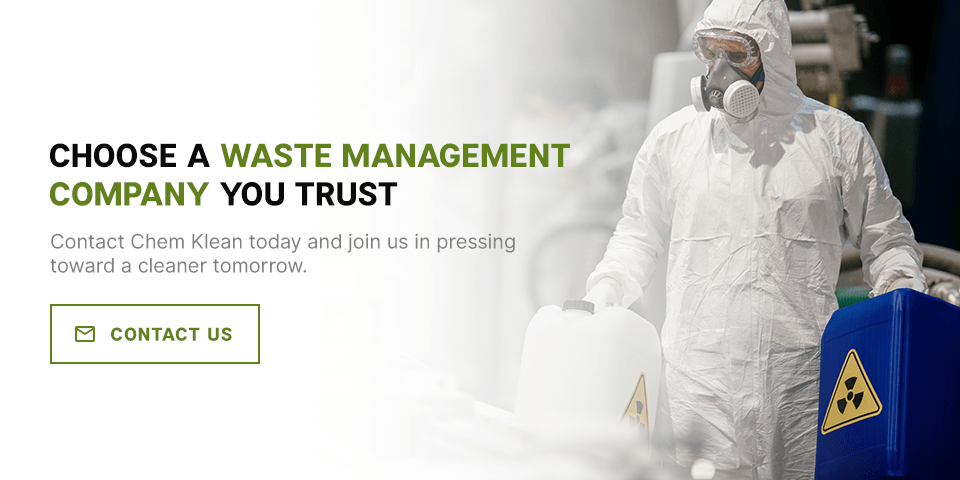
Choose a Waste Management Company You Trust
Finding a team of expert chemists to help your lab properly collect, categorize, pack and dispose of your hazardous materials is key to properly handling toxic waste. A good lab packing company will make sure the chemicals within your lab packs are correctly marked, packed and disposed of in compliance with all regulatory agencies. To ensure safety throughout transportation, they may even test unknown or mismarked substances.
Because of the safety and legal risks involved with improperly disposing of hazardous substances, it is imperative to work with a waste management company you can trust to provide adequate services that align with all federal, state and local hazardous waste regulations. You need to find a waste management business that will protect your employees, community and environment from harm as well as shield your organization from any legal troubles.
The lab pack services offered by Chem Klean are thorough and dependable for safe collection, transport and disposal of hazardous materials. With over 20 years of experience in serving laboratories of all sizes, Chem Klean knows how to handle hazardous waste from a wide variety of industries. From universities to dry cleaners to manufacturers, Chem Klean knows how to best meet your company's waste disposal needs.
Depending on your organization's needs, Chem Klean's lab packing and transportation services might include:
- EPA and DOT compliant labeling and packaging.
- Convenient pickup times scheduled during your operating hours.
- Cost-effective and efficient disposal of your laboratory's chemical waste.
- Completion of all regulation paperwork.
- Disposal receipts for you to keep in your records.
Whether your lab needs a one-time cleanout or routine waste management services, Chem Klean is prepared to provide safe transportation and environmentally friendly disposal of all your hazardous materials. We will give you a free quote along with our innovative and cost-effective lab packing services. As a local family-owned and operated business, Chem Klean offers exceptional customer service and a 24- to 48-hour turnaround time on all of our services.
If you're looking for a trustworthy hazardous waste management company to provide dependable lab packing and laboratory waste disposal services, contact Chem Klean today and join us in pressing toward a cleaner tomorrow.
